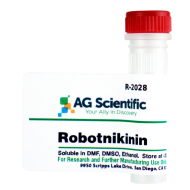In this blog, we discuss the basics of Robotnikinin, an inhibitor of Sonic hedgehog (Shh) signaling proteins.
What is Sonic Hedgehog?
Sonic Hedgehog is one of three homologues found in vertebrates. The hedgehog family consists of sonic hedgehog (shh), desert hedgehog (dhh), and Indian hedgehog (ihh). Shh is the most common of the three and is therefore the best documented (Gilbert, 2000). Shh is made in the notochord of developing embryos. This important protein has many functions throughout the life of the organisms in which it is expressed. Below a few of these areas are described in detail.
How Shh Got its Name
Sonic hedgehog is in fact named after the character from the popular Sega Genesis video game. The original hedgehog gene was found in Drosophila and was named for the appearance of the mutant phenotype which causes an embryo to be covered with pointy denticles resembling a hedgehog. The first two homologs of hedgehog were named after species of hedgehog and the third was named after the video game character (Gilbert, 2000).
How Shh Functions in Early Development
In the neural tube, the dorsal region is where the spinal neurons will get input from sensory neurons. The motor neurons reside in the ventral region. The embryonic development of the dorsal region is determined by signals coming from the epidermis, and the development of the ventral region is determined by signals, such as proteins, coming from the notochord. It is this ventral development stemming from the notochord that shh enters the scene. As shh is secreted from the notochord, a gradient is formed. Different levels of shh cause different types of cells to be formed in the developing embryo (Gilbert, 2000). Figure 1 describes how shh is secreted from the cell.
Shh is a transcription regulating protein. It makes sense that a molecule involved in development would regulate transcription because cells are taking on specific characteristics during development based on which genes are transcribed. Shh affects two other genes that are part of the pathway through which shh functions (Gilbert, 2000). See Figure 2 for a more detailed explanation
Shh in Optic Development
Shh is involved in the separation of the single eye field into two bilateral fields. Although not proven, it is thought that shh emitted from the prechordal plate suppresses Pax6 which causes the eye field to divide into two. If the shh gene is mutated, the result is cyclopia, a single eye in the center of the face (Gilbert, 2000).
Other Important Roles of Shh
-
Purkinje neurons secrete shh to sustain the division of granule neuron precursors in the external granule layer in cerebral development.
-
Shh plays a role in a left-right axis patterning pathway.
-
Shh has been implicated in the growth of cutaneous appendages such as hair, feathers or scales. It is said to be the activator because it does not diffuse rapidly while BMP4 and BMP2 are possible inhibitors.
-
Shh is thought to affect the specification of the mesoderm in gut formation.
-
Shh plays an important role in limb development, specifically affecting the zone of polarizing activity (ZPA).
-
Shh specify motor neurons in early development by inducting certain transcription factors at different concentrations (see above explanation Shh functions in Early Development).
-
By repressing Shh expression in the endoderm, the notochord initiates pancreatic development.
